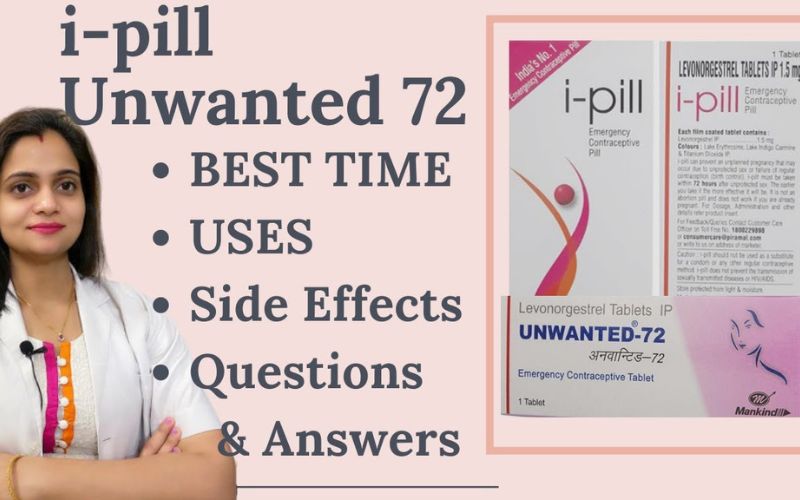“i-pill” Emergency contraception, commonly known as the “morning-after pill” or in this case, the I-Pill, serves a crucial role in reproductive health by preventing unintended pregnancies after unprotected sex or contraceptive failure. Among the various brands available, the I-Pill is a well-known option used globally. One of the most common questions regarding emergency contraception revolves around its effectiveness window—how long after unprotected intercourse can the I-Pill effectively prevent pregnancy?
What is the I-Pill?
The I-Pill, often containing levonorgestrel as its active ingredient, is a form of emergency contraception widely used by women worldwide. It is available over-the-counter in many countries and is recommended for use within a specific timeframe after unprotected sex to reduce the risk of pregnancy.
Mechanism of Action
The I-pill primary mechanism of the I-Pill involves delaying or preventing ovulation. By administering a high dose of synthetic hormones (progestin), the pill works to disrupt the normal hormonal patterns that lead to ovulation. Without ovulation, fertilization cannot occur, thereby reducing the chances of pregnancy. It’s important to note that the I-Pill does not terminate an existing pregnancy but rather prevents conception from occurring.
Effectiveness Window
The effectiveness of the I-Pill is time-sensitive, meaning it works best when taken as soon as possible after unprotected intercourse. The effectiveness can vary depending on when the pill is taken relative to ovulation and fertilization.
- Immediate Use: When taken within 24 hours of unprotected sex, the I-Pill is highly effective, with pregnancy rates significantly reduced.
- Up to 72 Hours: Even when taken within 72 hours (3 days) after unprotected intercourse, the I-Pill can still significantly reduce the risk of pregnancy. Studies suggest that its effectiveness remains high during this timeframe.
- Beyond 72 Hours: As time passes, especially beyond 72 hours, the effectiveness of the I-Pill decreases. While it may still provide some protection against pregnancy, the likelihood of its success diminishes.
Factors Affecting Effectiveness
Several factors can influence the effectiveness of the I-Pill:
- Timing: Taking the pill as soon as possible after unprotected sex maximizes its effectiveness.
- Body Weight: Research indicates that higher body weight may decrease the effectiveness of the I-Pill. In such cases, alternative forms of emergency contraception or a higher dose may be recommended.
- Menstrual Cycle: The timing of intercourse relative to ovulation in the menstrual cycle can impact the pill’s effectiveness. If ovulation has already occurred, the I-Pill may be less effective.
Safety and Side Effects
The I-Pill is generally safe for most women, but like any medication, it can cause side effects. Common side effects include nausea, vomiting, fatigue, and irregular bleeding. Serious side effects are rare but may include severe allergic reactions or blood clots in rare cases.
Effectiveness vs. Regular Contraception
Emergency contraception like the I-Pill is not intended for regular use and should not replace regular contraceptive methods such as condoms, birth control pills, or intrauterine devices (IUDs). These methods are more reliable for ongoing pregnancy prevention.
Conclusion
In summary, the Definition and purpose of emergency contraception, the I-Pill is a valuable tool for preventing unintended pregnancies after unprotected sex. Its effectiveness is highest when taken as soon as possible after intercourse, generally within 72 hours. Understanding how emergency contraception works and its limitations can empower individuals to make informed decisions about their reproductive health.
For those seeking emergency contraception, timely access and awareness of its effectiveness window are crucial. Consulting healthcare providers can provide personalized guidance on using the I-Pill effectively and address any concerns regarding its use.
By knowing how long the I-Pill works and under what circumstances it remains effective, individuals can take proactive steps to protect their reproductive health and well-being.





